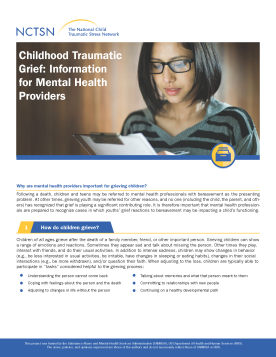
Childhood Traumatic Grief: Information for Mental Health Providers
Offers information on why mental health providers are important for grieving children. This fact sheet outlines how children grieve, what Childhood Traumatic Grief is...
The following resources on child trauma were developed by the NCTSN. To find a specific topic or resource, enter keywords in the search box, or filter by resource type, trauma type, language, or audience.

Offers information on why mental health providers are important for grieving children. This fact sheet outlines how children grieve, what Childhood Traumatic Grief is...
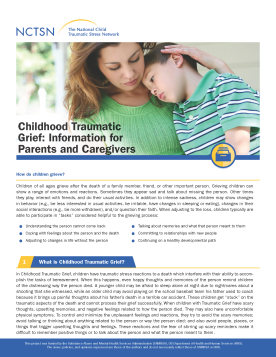
Provides information to parents and caregivers on Childhood Traumatic Grief.

Offers information on why pediatric providers are important for grieving children.
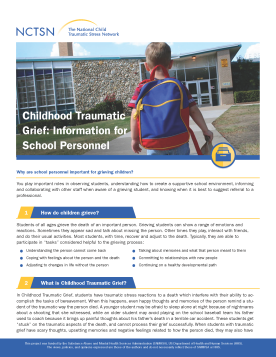
Offers information on why school personnel are important for grieving students. This fact sheet outlines how children grieve, what Childhood Traumatic Grief is, who develops Childhood Traumatic Grief, what traumatic stress reactions in Childhood Traumatic Grief can look like, the signs a student
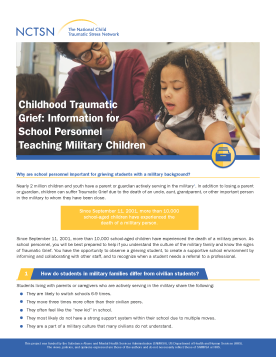
Offers information on why school personnel are important for grieving students with a military background. This fact sheet outlines how students in military families differ from civilian students, how students grieve, what Childhood Traumatic Grief is, who develops Childhood Traumatic Grief, what
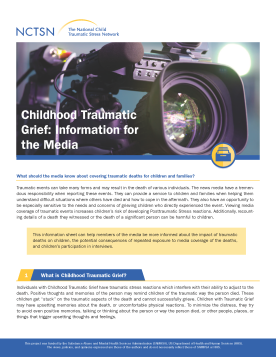
Provides information to the media on what to know about covering traumatic deaths for children and families.
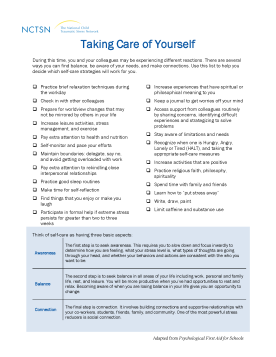
Offers providers a list of ideas for self-care strategies to use after a difficult event. This checklist outlines the three basics aspects of self-care including awareness, balance, and connection.
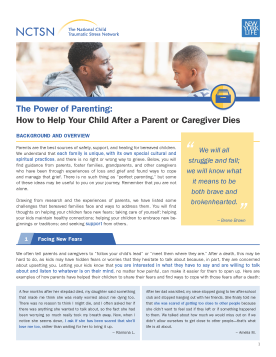
Offers guidance around helping children cope after the death of a loved one. Information is provided about how to face new fears in the context of bereavement, how grieving caregivers can take care of their own needs...
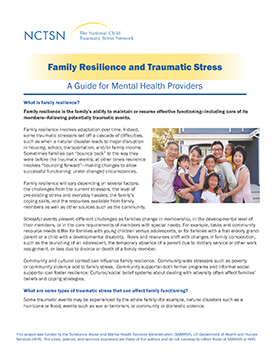
Provides information on family resilience. This fact sheet discusses a family's ability to maintain or resume effective functioning, including care of its members following potentially traumatic events.
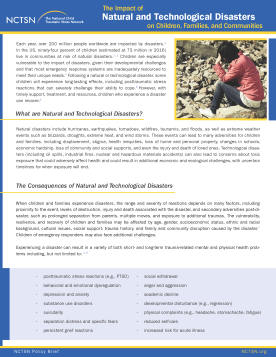
Provides information to policymakers about the impact of natural and technological disasters on children, families, and communities.
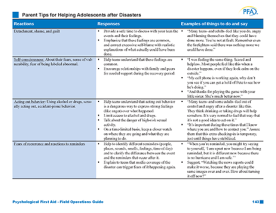
Is a handout from Psychological First Aid Field Operations Guide (PFA). This handout provides parents with common reactions after a disaster, ways to respond to those reactions, and examples of things you can say to your adolescent.
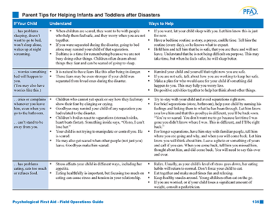
Is a handout from Psychological First Aid Field Operations Guide (PFA). This handout provides parents with common reactions after a disaster, ways to respond to those reactions, and examples of things you can say to your infants or toddlers.